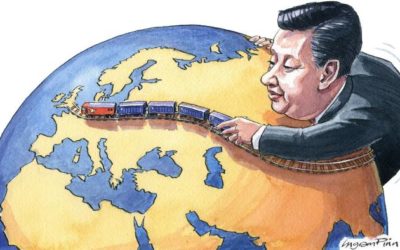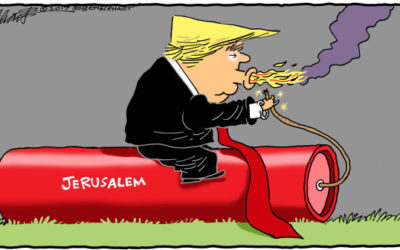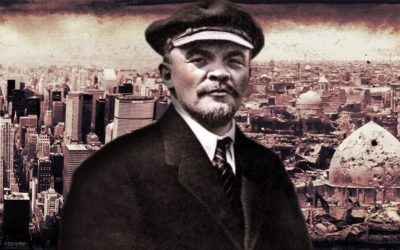Anand
It has been one year since Vladimir Putin-led imperialist Russia invaded Ukraine with tens of thousands of troops from the north, east and south. As expected, this so-called special military operation turned out to be the biggest war in Europe since the Second World War whose end is nowhere in sight. It is an open secret that this conflict lingers on to this day because the imperialist US-led NATO has thrown its weight behind Ukraine with its advanced weaponry, military hardware, training and surveillance technology. Now there is hardly any doubt that this proxy war is a typical case of an inter-imperialist war that is threatening to escalate further.
This proxy war between the two imperialist axes is taking place at a time when the US led western imperialist axis is in decline while the Russia-China axis is in its ascendency. In fact, the war in Ukraine bears testimony to the fact that the change in the inter-imperialist equations is under way. The stand-off between the two imperialist axes reached its zenith on the occasion of the first anniversary of the Ukraine War when the leaders of the two imperialist axes openly challenged each other and held the other being responsible for the escalation of war. US president Joe Biden paid a surprised visit to the war battered Ukrainian capital Kyiv to make a point that the West is in control of the situation. The visit was also aimed at pursuing the EU countries to prepare for a fresh offensive. He vowed to permanently eliminate the threat from Russia and to liberate all the Ukrainian territory. In a tit for tat response, the Russian president Vladimir Putin responded to Biden’s war-mongering by suspending Russia’s participation in the New START treaty which caps the number of strategic nuclear warheads that the US and Russia could deploy. This competitive war-mongering by the two leading nuclear powers of the world has dismissed all the chances of any negotiated settlement in Ukraine and the future is set to be much more violent than the past.
In the one year of the war more than two hundred thousand Russian and Ukrainian soldiers have already been killed or injured. Ukraine is in rubble; roads, railway lines, power stations have been destroyed; its economy has completely collapsed; at least 40 thousand civilians have lost their lives and about 8 million Ukrainians have been forced to flee the country. Even as the people of Ukraine are at the receiving end of this terrible tragedy, their president Volodymyr Zelensky is busy travelling one western capital after another pleading to speed up the supply of more and more lethal weapons so that the Russia could be defeated. Not surprisingly, he is being felicitated by the western parliaments as some kind of war hero; after all he is fighting their rival! If in the process people of Ukraine have to face death and devastation, so be it! It is none of their concern. In fact, this destruction is profitable for their military industrial complex now and for their myriad corporations vying for getting contracts for rebuilding Ukraine.
Major Developments During One Year of War
After months of deployment of Russian troops along the Ukrainian borders, the Russian president Vladimir Putin ordered the tens of thousands of Russian troops to cross the border on February 24 last year. Moscow’s initial plan was to capture the capital Kyiv through a kind of blitzkrieg and force Zelensky to come to the negotiation table and compel him to agree to the annexation of Donbas region in the eastern Ukraine with Russia and to get the assurance that Ukraine would not join NATO. However, Russia failed to achieve this goal as Ukrainian forces emboldened as they were with the western support launched a counter-offensive due to which the Russian troops had to retreat from Kyiv.
In March 2022 Russia changed its strategy and instead of capturing the capital Kyiv, it started focussing on capturing the Donbas region. By July 2022 Russia had captured Sievierodonetsk and Lysychansk, the two major cities of Donbas. As expected, the US-led western imperialist powers slapped severe sanctions on Russia even at the cost of inviting energy crisis in Europe. They also started supplying tanks, missiles, drones, radars, munitions, trucks, training, surveillance instruments, etc. to Ukraine at an alarming rate. Also, Sweden and Finland expressed their interest to be part of NATO which has enraged Russia. All this was bound to escalate the conflict and it indeed did.
Emboldened by the western support Ukraine launched a counter-offensive which caused some serious setbacks to Russia in the latter half of the year. In September, Ukraine achieved significant gains in the Kharkiv region in north-east as it recaptured the sole rail hub supplying Russia’s front line. Also, in November, the Russia suffered yet another setback, this time in the south when it had to withdraw its troops from the west bank of the Dnieper River and had to restation them near the east bank. Russia had to withdraw from the city of Kherson as well. Incidentally, Kherson was the only regional capital captured by it during the war. Further, Ukraine also tried to disconnect Crimea from the mainland Russia by carrying out a terrorist attack on the Kerch Bridge which connects Crimea with the mainland Russia. However, Russia soon managed to repair the bridge and thereby the supply to Crimea were restored.
Responding to these setbacks Russia resorted to intensive missile attacks in the last weeks of 2022 especially targeting the energy infrastructure of Ukraine such as national grid which plunged Ukraine in darkness and cold. Towards the end of the year, Russia also despatched three hundred thousand fresh troops to consolidate its gains over the occupied territory in the eastern Ukraine and expand therefrom. In the new year, Russia intensified its attacks and captured salt-mining town of Soledar in eastern Donetsk province. In February, Russia is focussing its onslaught on the nearby city of Bakhmut and in all likelihood it will be able to capture it sooner than later. As of February, Russia has come to occupy around one-fifth area of Ukraine.
As the Russian onslaught was intensifying in the new year, Zelensky made repeated appeals to his western patrons not just to send more tanks, ammunitions and modern weapons but more importantly the fighter planes. By the time of writing this article, he has got assurance for German Leopard tanks in addition to the American Abrams tank but nor for the fighter planes, but many in Europe have started giving it a serious thought. ECR, a conservative group in European parliament, is openly saying that the aim of West’s war must include the break-up of Russia. UK prime minister Rishi Sunak has also said, “nothing is off the table”. Poland and The Netherlands have already offered F-16 fighter jets to Ukraine if the allies in NATO and the “Ukraine Contact Group” agree to go ahead. So, it would not be surprising if Zelensky’s plead of fighter jets is heeded to in future, however, since that could escalate the war to territories beyond Ukraine, the western powers are taking time to decide about it.
Where are the Things Headed?
Under the prevailing complex circumstances, it is difficult to predict how long this war will go on. But the likelihood of ending this war in near future looks bleak. Already there is a talk of spring offensive from both sides. After the fresh supply of American and German tanks the eastern Ukrainian forces would try to recapture the lost territory in the eastern parts of the country including Crimea. The different actors involved in the conflict have varying goals.
Russia wants to capture large part of the eastern Ukraine on the ground that it is dominated by ethnic Russians who wish to unite with Russia just like Crimea. It also wants to stall the eastward expansion of NATO by inflicting heavy defeat to Ukraine and thereby setting an example in the region. This is the main objective of Russia. However, things did not unfold in exactly the same way as visualised by Putin before the war as Russia could not capture Kyiv and Kharkiv and it suffered some crucial setbacks in the last one year mainly due to complete backing of the western imperialist powers to Ukraine. Despite these setbacks, Putin continues to drum up support for the war within Russia by citing the western support to Ukraine as proof for his claims of the potential threat to the Russian nation and thereby appealing to the nationalistic feelings and beliefs of the people.
Ukraine on the other hand wants to push back the Russian troops from its territories and align with the Western powers. With the backing of its western allies, it seeks to foil Putin’s design of dismembering it. While Ukrainian president was felicitated by the western ruling classes and its politicians the ordinary Ukrainians have to suffer the main brunt of this war. They have to pay heavily for the crimes committed by their rulers in the past who converted their country into a playground for the game of inter-imperialist rivalry. In a recent interview with BBC, Zelensky has openly said that he is in no mood to agree for any peace deal with Russia if it involved giving up any of Ukrainian territories; he Instead reposed his absolute faith in the modern weapons to speed up peace. Zelensky has repeatedly expressed his frustration with the speed with which the western powers are supplying the weaponry. It is also to be noted that despite Zelensky eagerness to join NATO the western powers have not admitted it because if Ukraine becomes part of NATO the western countries would be obliged to not just send the arms but also the troops which could escalate the war beyond control.
The plan of the US and the EU is to prolong this conflict to an extent that it ultimately weakens Russia militarily and economically. At the same time the EU countries are hesitant to escalate this conflict beyond a point as it runs the risk of inviting the war to the doorsteps of European imperialist powers which would prove to be detrimental to their investments in the region and it would be highly unpopular as well. Moreover, a hawkish Putin can take the war even inside Europe and even the US, if he is forced. This is something that the West certainly does not want. Hence, the slow pace of supply of military equipments and hesitation to supply fighter planes. Besides, the prolonged conflict is likely to continue putting upward pressure on inflation and deteriorate the energy crisis and the cost-of-living crisis in Europe which is already resulting into waves of mass protests in different European countries including France, Germany, Spain and UK.
Just like the two World Wars, The US is farthest from the conflict zone and hence its position is relatively safer physically in this war as well. The US ruling class is paranoid about the imminent prospects of the decline of its imperialist dominance over the world with the rise of economic and military strength of the Russia-China imperialist axis. Its strategy of slapping sanctions on Russia in the aftermath of the war could not prove to be very effective because Russia managed to find the buyers of its oil and gas despite the sanctions imposed by the western powers and despite the alleged act of sabotage by the US of the Nord Stream Gas pipeline. Also, its loss due to sanctions was compensated by the high prices of oil and gas in the world market. It is to be noted that the countries like India, China, Turkey, Brazil, Netherlands, Spain and Japan have seen increase in the trade volumes with Russia in last one year. India alone imported a record amount of crude oil from Russia last year despite the objections from the US. So only a military defeat of Russia could satisfy US imperialist ambitions of weakening Russia and thereby making a dent into the rival imperialist axis. No wonder it continues to pump billions of dollars in the war zone in the hope of inflicting severe loss to the advancing Russian army.
With these varying objectives and perilous goals, things are not under the control of any single actor. In the race for one-upmanship things can swiftly go out of control. When we consider the fact that both the warring imperialist blocks have stockpiles of nuclear weapons, the situation assumes even more dangerous proportion. Already the rhetoric of nuclear war has begun to be used.
Alongside the conflict with Russia, the US-led western imperialist axis is also intensifying their tussle with China, the other player in the rival imperialist axis. This rivalry came to the surface last year on multiple occasion, e.g. during the visit of US House of Representative’s speaker Nancy Pelosi’s visit to Taiwan. The recent stand-off regarding the shooting down of supposedly Chinese spy balloon off the coast of South Carolina also points towards increasing hostility between the US and China. Last year also witnessed the formation of Aukus, the new military pact between US, UK and Australia. Also, new military agreement was signed between UK and Japan and the increased NATO presence in the Pacific and repeated military skirmishes in the Pacific. The situation is fast reaching towards a situation when a flashpoint could lead to a full-blown war with China. In fact, a recent US Air Force general even went on to predict that the war with China is a real possibility by 2025. The western media is rife with the stories about the new cold war and the High-Tech war with China. Even in Ukraine, the US has been alleging that China is helping Russia militarily. While earlier US used to blame China for supplying non-lethal material support to Russia, recently US secretary of State Anthony Blinken issued a statement that China is planning to supply lethal material support as well to Russia. All these point towards increased stand-off between US and China also in future.
Clearly, the contradictions of global capitalism are taking us towards more and more terrible devastations. While millions directly face death and destruction in Ukraine, billions of people world over are likely to pay the price of war in terms of increased commodity and energy prices and the imminent threat of economic recession. At the same time this situation will also create scope for revolutionary interventions provided the subjective forces of revolution get their acts together. The coming years would be of utter chaos due to the deepening economic crisis and sharpening imperialist rivalry. This can create revolutionary situation in a number of countries. The challenge before revolutionary communists is to prepare themselves to play the role of the vanguard which can effectively intervene in such a situation.




